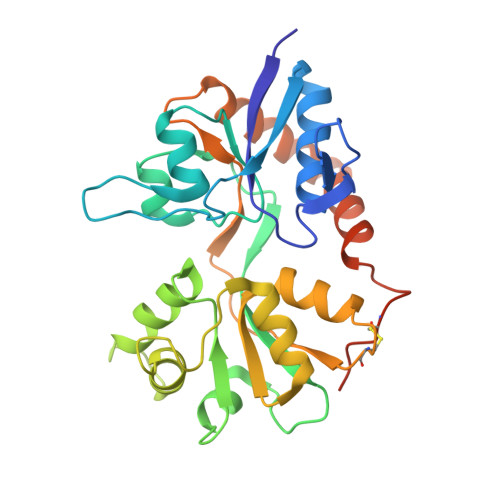GluD1 binds GABA and controls inhibitory plasticity.
Piot, L., Heroven, C., Bossi, S., Zamith, J., Malinauskas, T., Johnson, C., Wennagel, D., Stroebel, D., Charrier, C., Aricescu, A.R., Mony, L., Paoletti, P.(2023) Science 382: 1389-1394
- PubMed: 38060673
- DOI: https://doi.org/10.1126/science.adf3406
- Primary Citation of Related Structures:
8BLJ, 8BN2, 8BN5 - PubMed Abstract:
Fast synaptic neurotransmission in the vertebrate central nervous system relies primarily on ionotropic glutamate receptors (iGluRs), which drive neuronal excitation, and type A γ-aminobutyric acid receptors (GABA A Rs), which are responsible for neuronal inhibition. However, the GluD1 receptor, an iGluR family member, is present at both excitatory and inhibitory synapses. Whether and how GluD1 activation may affect inhibitory neurotransmission is unknown. In this work, by using a combination of biochemical, structural, and functional analyses, we demonstrate that GluD1 binds GABA, a previously unknown feature of iGluRs. GluD1 activation produces long-lasting enhancement of GABAergic synaptic currents in the adult mouse hippocampus through a non-ionotropic mechanism that is dependent on trans-synaptic anchoring. The identification of GluD1 as a GABA receptor that controls inhibitory synaptic plasticity challenges the classical dichotomy between glutamatergic and GABAergic receptors.
- Institut de Biologie de l'ENS (IBENS), Ecole Normale Supérieure, Université PSL, CNRS, INSERM, F-75005 Paris, France.
Organizational Affiliation:





















